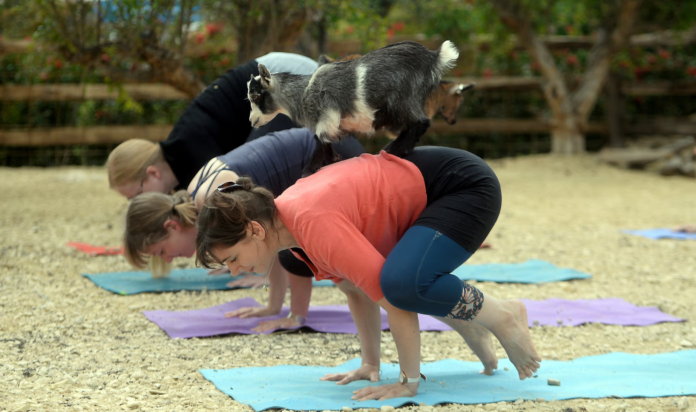Imagine this: you’re in the middle of a yoga session, striking a pose, while playful little goats are wandering around, curiously trying to interact with you.
That’s goat yoga in a nutshell.
Everything You Need to Know About Goat Yoga
The stars of the show are usually Nigerian Dwarf goats or other small breeds, known for their friendly nature and tendency to climb things—including people. Just think how it would feel to struggle to hold a warrior III pose with a tiny goat balancing on your back. Fun, right?
The yoga itself isn’t much different from your standard class—it can be gentle vinyasa or hatha flows, sequences like sun salutations, and many downward dogs and child poses. But it’s the unexpected moments of joy, like receiving a mini hoof massage or simply giggling as a goat decides to join your mat, that make goat yoga a unique experience.
Classes can be held indoors at a studio or out in a field, which is a much more natural environment for the little furry climbers. Sometimes, each yogi gets their own goat, while other times, there will be a few goats roaming around.
And don’t worry about your safety—these goats are as friendly and harmless as they come. The only issue is whether goat yoga is safe and good for the goats, which we’ll discuss in this article.
So, let’s find out more about goat yoga, where it originated, and whether it’s worth giving a try.
Who Invented Goat Yoga?
This quirky idea is a relatively new phenomenon that was popularized by Lainey Morse, an Oregon-based PR expert.
Lainey was grappling with personal challenges—a recent divorce and a diagnosis of an autoimmune disease in 2016. During this period, she found solace and joy in the company of the Nigerian Dwarf goats on her farm. They became her source of comfort and helped her deal with the lows of depression.
This is when she realized the immense emotional uplift she received from her goats. So, she decided to share that joy, hoping it would help others feel better, too. She first started inviting friends over for what she called “goat happy hour,” a casual hangout for people to relax and interact with her goats.
During one of these sessions, a friend who was also a yoga instructor remarked on how perfect that environment would be for a yoga class. And just like that, the idea for goat yoga was born.
Lainey, with her knack for marketing and PR, turned that idea into a reality. After putting the word out, interest skyrocketed, with over 2,000 people expressing their desire to do yoga with goats. Today, there are even waiting lists for the chance to do yoga with Lainey’s goats.
Even more impressively, the goat yoga craze has been so popular that, today, hundreds if not thousands of studios offer this unique experience.
But, what’s the merit behind it? Is it all just for fun?
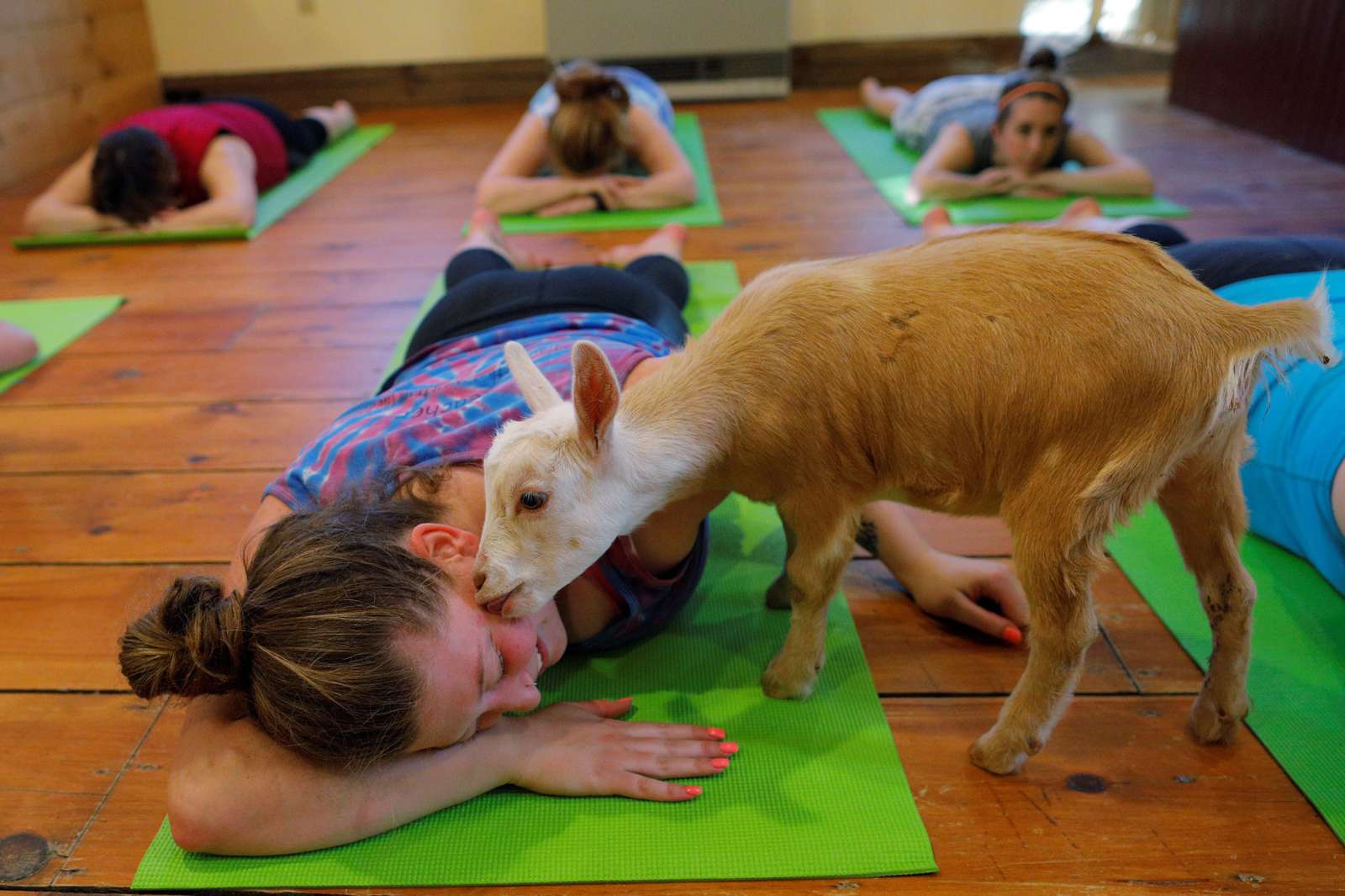
What Is the Purpose of Goat Yoga?
Some people go as far as to claim that goat yoga is a form of animal-assisted therapy.
Just like the name suggests, animal-assisted therapy is a therapeutic approach that incorporates animals into the treatment process. The idea is that animals can improve a person’s social, emotional, or cognitive functioning. Several studies suggest that these programs are effective in reducing stress, pain, anxiety, PTSD, and even physical disabilities.
That’s all good, but the claim that goat yoga classifies as an animal-assisted therapy is a bit tricky.
Arguments in Favor of Goat Yoga as a Therapeutic Approach
The arguments in favor of goat yoga highlight that the practice can improve people’s well-being by uplifting their spirits. There are physical interactions with the animals—a critical component in animal-assisted therapies—and practitioners are encouraged to be more present and engaged at the moment, another key element of therapies.
Arguments Against Goat Yoga as a Therapeutic Approach
However, the arguments against goat yoga as a therapeutic approach mention its lack of structure, the lack of therapeutic intent, and the missing regulations and standards.
First, traditional animal-assisted therapy is highly structured, with specific goals and trained animals. Goat yoga lacks this level of structure and the animals are not trained.
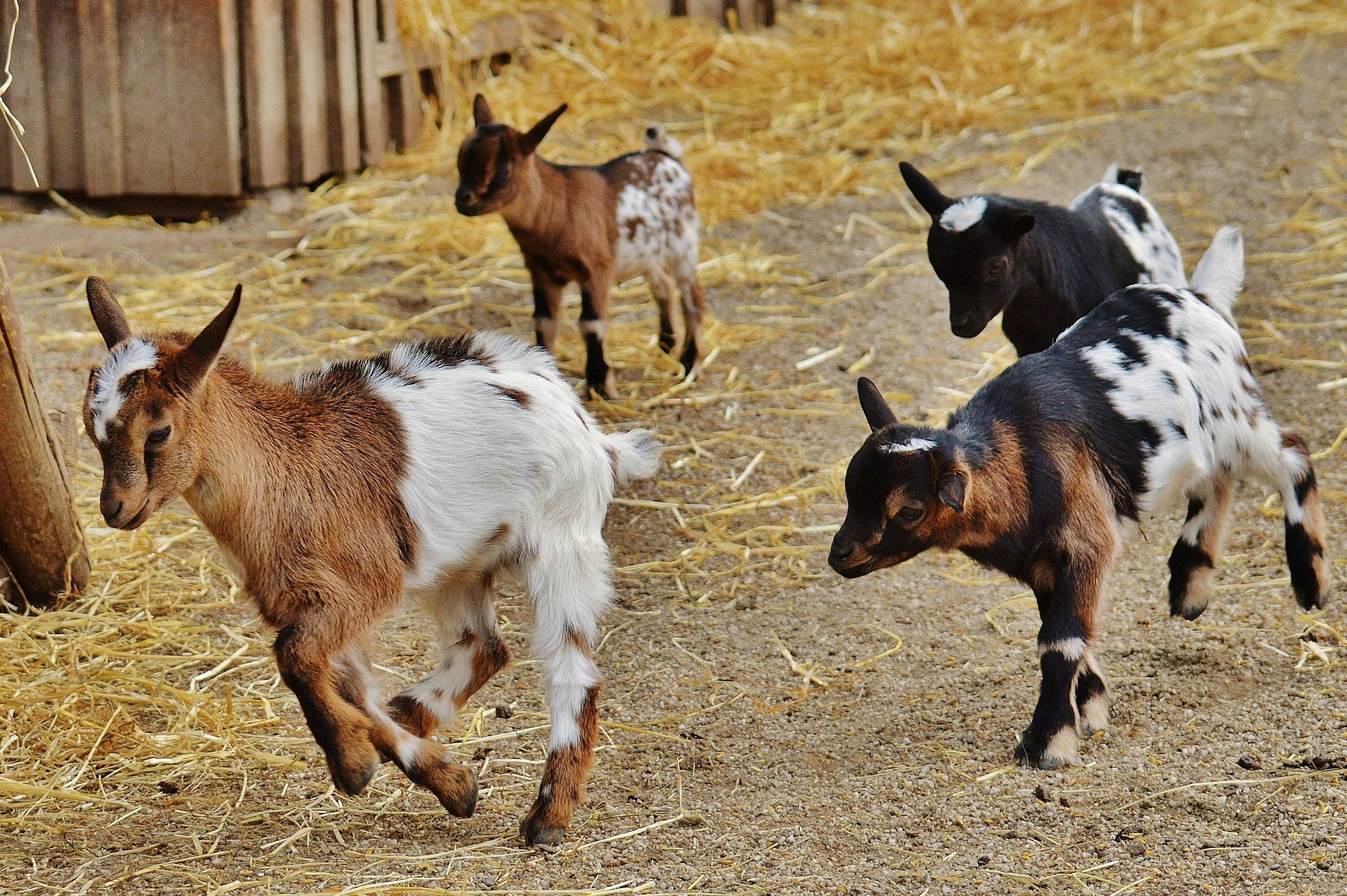
Second, the therapeutic goal set by a health professional in animal-assisted therapies is missing from goat yoga. Goat yoga is more about fun and joy rather than achieving specific health outcomes. While it does offer mental and physical benefits, these are more byproducts of a fun activity than targeted therapeutic outcomes. Also, the practice is not supervised by a licensed therapist.
Third, animal-assisted therapy programs are strictly regulated and held to high standards, especially when it comes to animal training and therapist licensing. Goat yoga just doesn’t meet these rigorous standards.
The Verdict?
Goat yoga is a blast. Its purpose is to give you a fun day out at the farm, with yoga mats, easy poses, and a bunch of friendly goats playing around. It’s comforting, it’s goofy, and yes, it definitely makes you feel good.
But calling it therapy? We probably shouldn’t do that, as the purpose of goat yoga is not therapy.
Therapy, especially when we’re talking about mental health, involves structured, purposeful interventions led by qualified professionals. It’s a highly regulated process that tackles some pretty tough stuff with the guidance of someone trained to help you through it.
Goat yoga is about stepping outside of your daily routine, laughing, and forgetting about your worries for an hour or two. And, that’s how we need to enjoy it—a wonderfully unique, feel-good activity that brightens your day. It’s a unique way to play and be joyful—which our mental wellbeing certainly requires!
But, if you’re dealing with psychological problems, the best course of action is to reach out to a health professional.
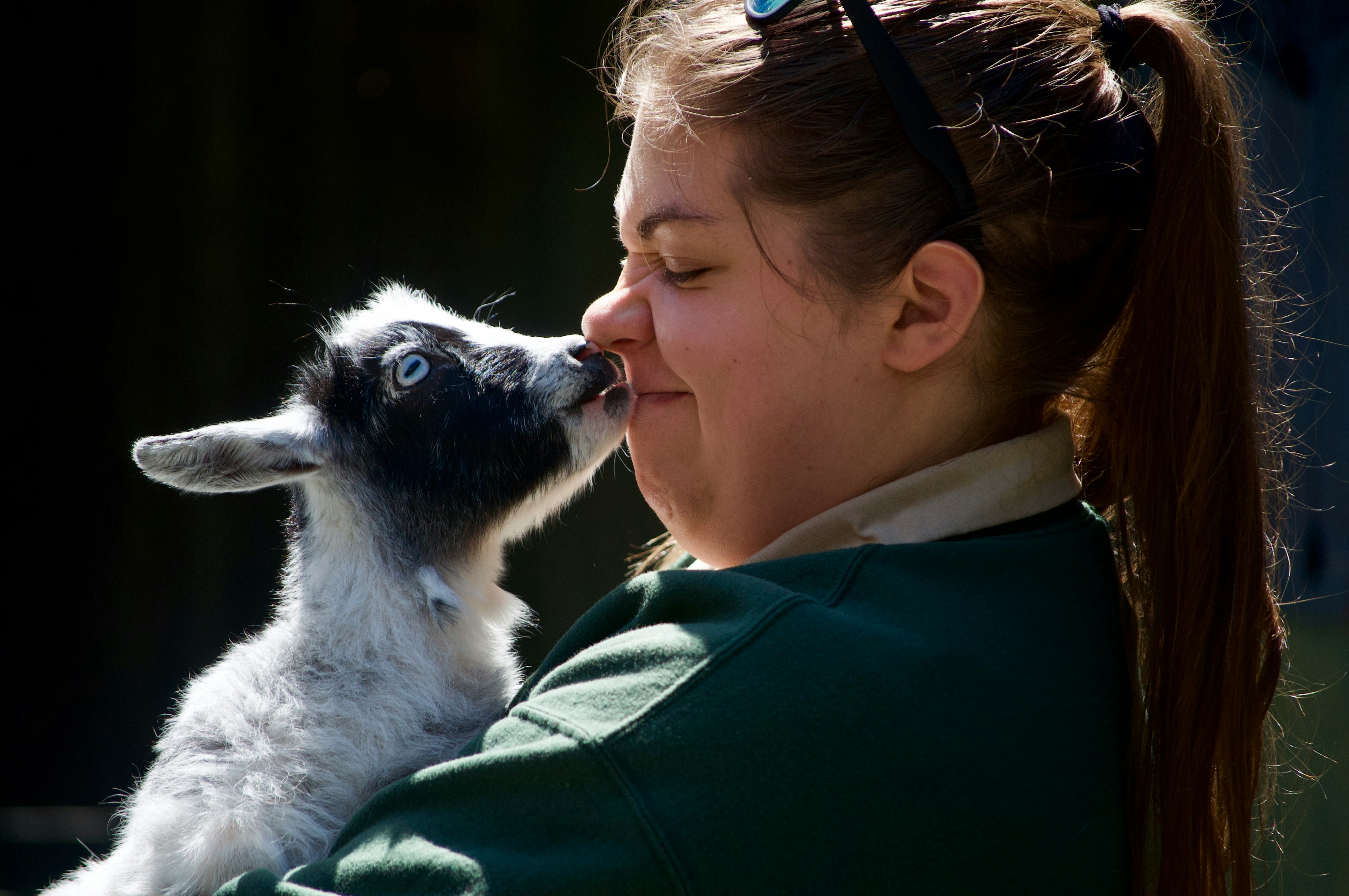
Ethical Concerns: Is Goat Yoga Hurting the Animals?
Until now, we spoke about goat yoga from a human-centric perspective as a harmless, fun way of enriching your yoga practice and making it even more comforting and enjoyable.
But many people have already raised the issue of animal welfare, which is fair to ask: Is this experience as good for the goats as it is for us?
Goats are social, curious, and playful by nature. They enjoy exploring, climbing, and yes, interacting with humans. So, on the surface, goat yoga seems like it makes their day fun, too. Still, with the commercialization of yoga, a lot of concerns come to light.
For instance, will the goats be deprived of their natural environment and tendencies in favor of interacting with people during that one or two-hour session? Will the goats be forced or trained to entertain people who want to get their money’s worth? Do all goat yoga studios prioritize the wellbeing of their goats over turning a profit? Likely, no.
These are valid concerns that go against traditional yogic principles of doing no harm (ahimsa).
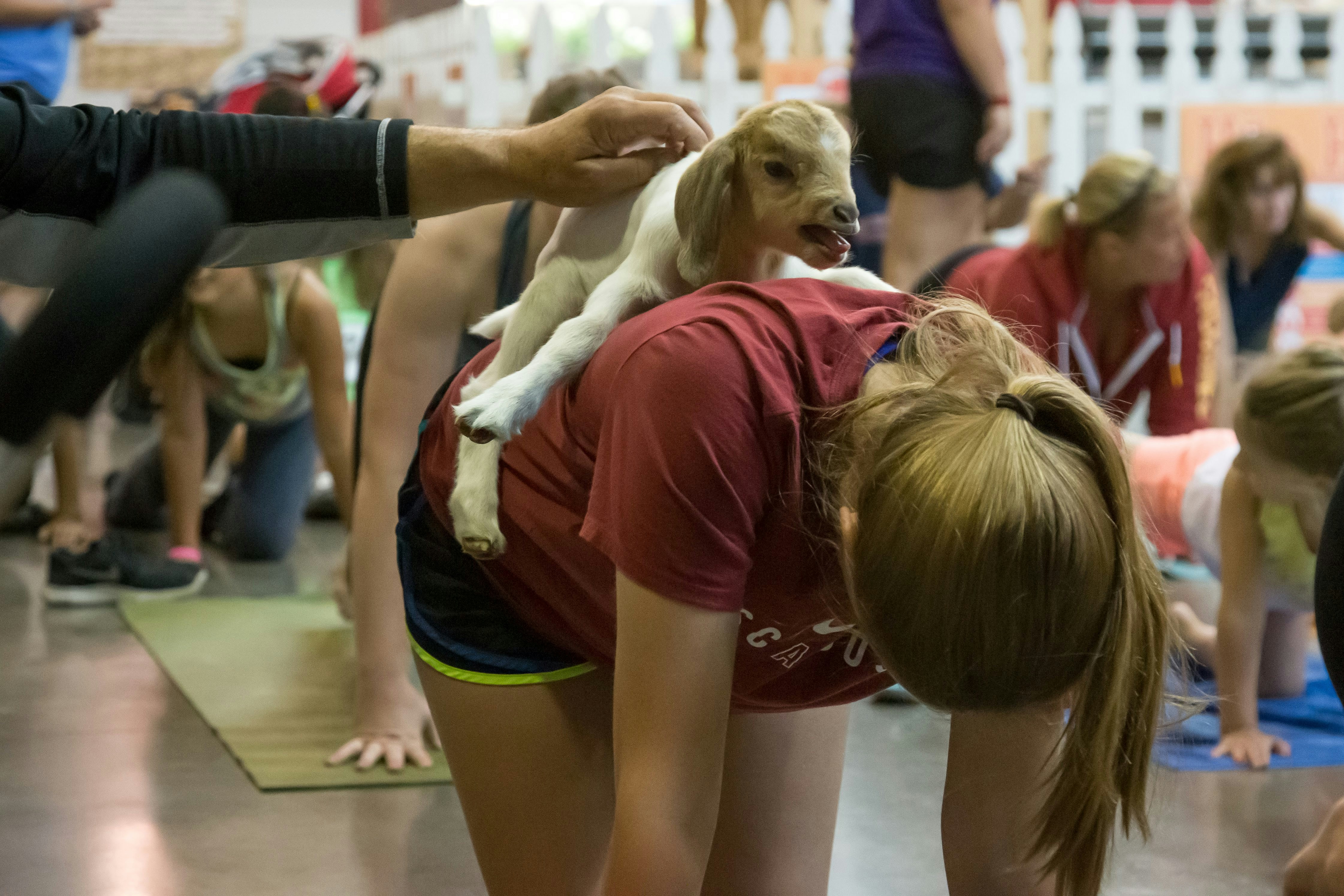
Tips to Make Sure Goat Yoga Remains Ethical
The well-being of the goats should always be the top priority, and the responsibility for this task falls on the practitioners as much as the studio/organization. We should always familiarize ourselves with those to whom we give our attention and money. Don’t be afraid to ask questions or seek explanations as to where and in what conditions the goats are kept. Ask if the goats are well-cared for outside of the yoga sessions—good nutrition, proper veterinary care, and plenty of space to roam and do their goaty things.
Make sure they’re not overworked, and that they have the freedom to move away if they’re not in the mood for interaction. The environment should be safe and comfortable for them, too.
Animal rights activists will point out that using animals for our entertainment will always raise some ethical concerns. However, as long as we do our due diligence when it comes to the organization we choose and we treat the animals with respect (not forcing the interaction), we can look at goat yoga as a positive experience. It could be a win-win situation: a unique and joyful yoga class for people and a fun, enriching activity for the goats.

Should You Try Goat Yoga?
Like most things in life, it depends on your own worldviews and preferences. If you’re looking for a straightforward answer—why not? Just make sure that you’re not allergic, do your due diligence regarding the animal ethics at your stable of choice, and finally—do your own part in respecting the goats’ boundaries. Maa means maa.
Goat yoga can be a delightful detour from the usual. It’s fun, joyful, and a bit quirky. Plus, there’s something genuinely soothing and peaceful in the act of practicing yoga with cute little goats. It’s probably serotonin-endorsing (the happiness hormone) and can make your day feel more light-hearted.
However, it’s also important to recognize goat yoga for what it is—a fun activity rather than a serious yoga practice. Traditional yoga encompasses so much more than physical exercise and requires a lot of commitment and dedication. So, while goat yoga can introduce an element of joy and novelty to your routine, it’s probably not something to replace your regular yoga practice with.
In the end, the worth of goat yoga comes down to what you hope to get out of it. If you’re looking for a memorable day out and a story to tell, then it’s definitely worth a try. But, if you want to work on your personal growth, or even to just touch your toes, you might want to look elsewhere, like DoYogaWithMe!


